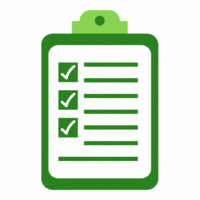Metode Proyek (Gardening) untuk Mengembangkan Kecerdasan Naturalis Anak di TK Alam Mutiara Umat
DOI:
https://doi.org/10.35473/ijec.v5i1.1950Keywords:
Metode Proyek, Kecerdasan NaturalisAbstract
Childhood is a period of play, playing activities will certainly provide real experiences and explore their natural intelligence, but in reality these activities have been replaced with the lecture method, in which children become bored. Therefore, it is necessary to have a project method to develop children's naturalist intelligence. This study aims to develop children's naturalist intelligence. Data collection techniques using observation and interviews. The data analysis technique uses conclusion drawing. Checking the validity of the findings using triangulation and peer examination. The results showed that with the project method, the naturalist intelligence of children could develop well.
ABSTRAK
Masa anak adalah masa bermain, dalam kegiatan bermain tentunya akan memberikan pengalaman nyata dan mengeksplor kecerdasan nauralisnya, namun pada kenyataannya kegiatan tersebut telah terganti menjadi metode ceramah, yang mana anak menjadi bosan. Oleh sebab itu diperlukan adanya metode proyek untuk mengembangkan kecerdasan naturalis anak. Penelitian ini bertujuan untuk mengembangkan kcerdasan naturalis anak. Teknik pengumpulan data menggunakan observasi dan wawancara. Teknik analisis data menggunakan penarikan kesimpulan. Pengecekan keabsahan temuan menggunakan triangulasi dan pemeriksaan teman sejawat. Hasil penelitian menunjukkan bahwa dengan adanya metode proyek maka kecerdasan naturalis anak dapat berkembang dengan baik.
References
Anufia, T. dan B. (2019). Instrumen pengumpulan data. 1–20.
Boakye, O. E. (2014). Pengaruh Pnggunaan Metode Proyek Terhadap Perkembangan Kognitif. Implementation Science, 39(1), 1–24. http://dx.doi.org/10.1016/j.biochi.2015.03.025%0Ahttp://dx.doi.org/10.1038/nature10402%0Ahttp://dx.doi.org/10.1038/nature21059%0Ahttp://journal.stainkudus.ac.id/index.php/equilibrium/article/view/1268/1127%0Ahttp://dx.doi.org/10.1038/nrmicro2577%0Ahttp://
Christianti, O. M. (2007). Anak dan Bermain. Club Prodi PGTK UNY & Majalah EduTOT PGTK.
Junike, W. (2020). Meningkatkan Kecerdasan Naturalis Anak Usia 5-6 Tahun Melalui Metode Proyek di TK Bekti Mulia Muaro Jambi. repository.unja.ac.id. https://repository.unja.ac.id/11282/
Lexy J, M. (2011). Metode Penelitian Kualitatif.
Rahmatunnisa, S. (2018). Upaya Meningkatkan Kecerdasan Naturalis Anak Usia 4-5 Tahun Melalui Bermain Pasir. Yaa Bunayya: Jurnal Pendidikan Anak Usia Dini, 2(1), 67–82.
Saepudin, E. (2011). Model Pembelajaran Demokrasi Melalui Pengembangan Organisasi Kemahasiswaan (Studi Kasus Terhadap Organisasi Kemahasiswaan di Universitas Pendidikan Indonesia Bandung). Universitas Pendidikan Indonesia, 127. http://a-research.upi.edu/skripsiview.php?no_skripsi=5152
Shidiq, U., & Choiri, M. (2019). Metode Penelitian Kualitatif di Bidang Pendidikan. In Journal of Chemical Information and Modeling (Vol. 53, Issue 9). http://repository.iainponorogo.ac.id/484/1/Metode Penelitian Kualitatif Di Bidang Pendidikan.pdf
Yusfita, N. (2019). Meningkatkan Kecerdasan Naturalis Anak Melalui Media Bahan Alam Biji-Bijian Pada Kelompok A Di Ra Al-Amin Tuntungan II. Jurnal STAI Darul Arafah. https://journal.staidarularafah.ac.id/index.php/jstaida/article/view/134
Downloads
Published
How to Cite
Issue
Section
License
Copyright (c) 2023 Indonesian Journal of Early Childhood: Jurnal Dunia Anak Usia Dini

This work is licensed under a Creative Commons Attribution-ShareAlike 4.0 International License.
Please find the rights and licenses in Indonesian Journal Of Early Childhood: Jurnal Dunia Anak Usia DIni. By submitting the article/manuscript of the article, the author(s) agree with this policy. No specific document sign-off is required.
1. License
The non-commercial use of the article will be governed by the Creative Commons Attribution license as currently displayed on Creative Commons Attribution-ShareAlike 4.0 International License.
2. Author(s)' Warranties
The author warrants that the article is original, written by stated author(s), has not been published before, contains no unlawful statements, does not infringe the rights of others, is subject to copyright that is vested exclusively in the author and free of any third party rights, and that any necessary written permissions to quote from other sources have been obtained by the author(s).
3. User Rights
Indonesian Journal Of Early Childhood: Jurnal Dunia Anak Usia Dini's spirit is to disseminate articles published are as free as possible. Under the Creative Commons license, Indonesian Journal Of Early Childhood: Jurnal Dunia Anak Usia Dini permits users to copy, distribute, display, and perform the work for non-commercial purposes only. Users will also need to attribute authors and Indonesian Journal Of Early Childhood: Jurnal Dunia Anak Usia Dini on distributing works in the journal and other media of publications.
4. Co-Authorship
If the article was jointly prepared by more than one author, any authors submitting the manuscript warrants that he/she has been authorized by all co-authors to be agreed on this copyright and license notice (agreement) on their behalf, and agrees to inform his/her co-authors of the terms of this policy. Indonesian Journal Of Early Childhood: Jurnal Dunia Anak Usia Dini will not be held liable for anything that may arise due to the author(s) internal dispute. Indonesian Journal Of Early Childhood: Jurnal Dunia Anak Usia Dini will only communicate with the corresponding author.
5. Miscellaneous
Indonesian Journal Of Early Childhood: Jurnal Dunia Anak Usia Dini will publish the article (or have it published) in the journal if the article’s editorial process is successfully completed. Indonesian Journal Of Early Childhood: Jurnal Dunia Anak Usia Dini's editors may modify the article to a style of punctuation, spelling, capitalization, referencing and usage that deems appropriate. The author acknowledges that the article may be published so that it will be publicly accessible and such access will be free of charge for the readers as mentioned in point 3.
Â
Every accepted manuscript should be accompanied by "Copyright Transfer Agreement" prior to the article publication.



